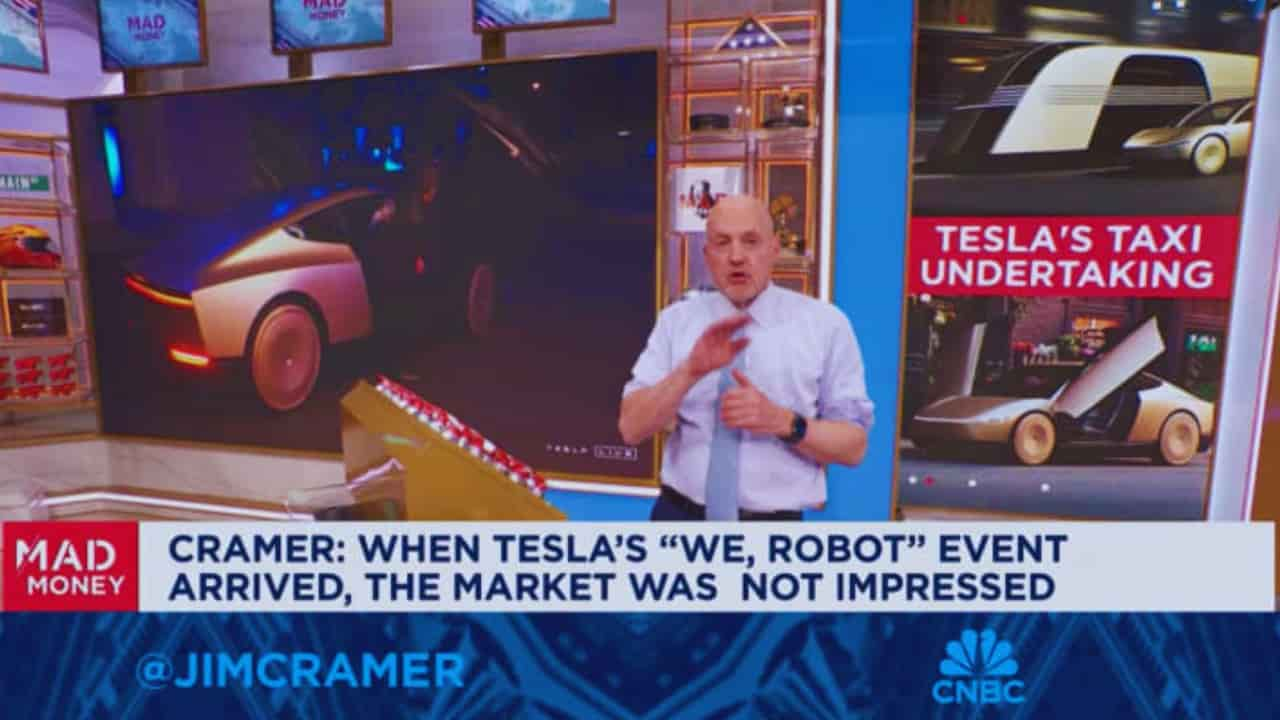Tesla’s Cybercab Debut: A Bump in the Road for Musk’s Robotaxi Dream
In a surprising turn of events, Tesla’s much-hyped robotaxi unveiling failed to impress investors, leaving many to wonder about the future of the electric vehicle giant’s autonomous driving ambitions.
As a seasoned reporter covering the tech and automotive sectors, I’ve seen my fair share of product launches, but this one stands out for all the wrong reasons.
Thursday night’s event, eagerly anticipated by Tesla fans and Wall Street alike, was meant to be a game-changer. Instead, it left more questions than answers, sending Tesla’s stock into a tailspin. By Friday’s close, shares had plummeted 8.78%, wiping out billions in market value.
The show’s star, the futuristic-looking Cybercab, turned heads with its sleek design. But looks aren’t everything in the cutthroat world of self-driving technology.
Investors and industry experts were hungry for concrete details about the vehicle’s capabilities, costs, and rollout timeline. Unfortunately, Tesla CEO Elon Musk’s presentation left much to be desired on these fronts.
CNBC’s Jim Cramer, known for his no-nonsense take on market trends, didn’t mince words when discussing the event’s aftermath.
“Even though Tesla’s robotaxi event was gorgeous, we didn’t get enough detail to justify treating this company like an autonomous driving business rather than an electric vehicle maker,” Cramer remarked. He advised investors to stay on the sidelines, neither buying nor selling Tesla stock.
But Thursday’s event failed to deliver the knockout punch Tesla needed. While the Cybercab’s design drew praise, the lack of substance in the demonstration left many scratching their heads.
Musk’s vague answers about costs and timelines did little to instill confidence in Tesla’s ability to soon introduce a fully autonomous vehicle to the market.
The market’s reaction was swift and brutal. As Tesla’s stock took a nosedive, ride-hailing companies Uber and Lyft saw their shares rally. Uber even hit a new all-time high, suggesting that Wall Street isn’t yet buying into Tesla’s robotaxi vision.
This setback highlights Tesla’s challenges as it tries to transition from a traditional automaker to a leader in autonomous driving technology. The company has long touted its Autopilot system as a stepping stone to full self-driving capabilities, but progress has been slower than many had hoped.
Moreover, Tesla isn’t alone in this race. Traditional automakers and tech giants are pouring billions into developing self-driving systems. Companies like Waymo, owned by Google parent Alphabet, have been making steady progress with their autonomous vehicle programs.
For Tesla, the stakes couldn’t be higher. Believers have long justified the company’s sky-high valuation as a bet on future technology, not just current car sales. If Tesla can’t convince the market that it’s genuinely on the cusp of a robotaxi revolution, it may face a painful re-evaluation.
Looking ahead, all eyes will be on Tesla’s next moves. Will the company double down on its robotaxi ambitions, providing more concrete evidence of its technological prowess? Or will it refocus on its core electric vehicle business, which still maintains a significant lead over many competitors?
One thing is clear: Tesla must do more than dazzle with futuristic designs. The company must deliver substance and style to win over skeptical investors and secure its place in the autonomous driving future. The road ahead may be bumpy, but the journey is far from over for Tesla and its visionary leader.
As this story unfolds, we’ll be keeping a close eye on Tesla’s every move. Today’s setback could be tomorrow’s breakthrough in the fast-paced world of tech and automotive innovation. Stay tuned for more updates on this developing story.
